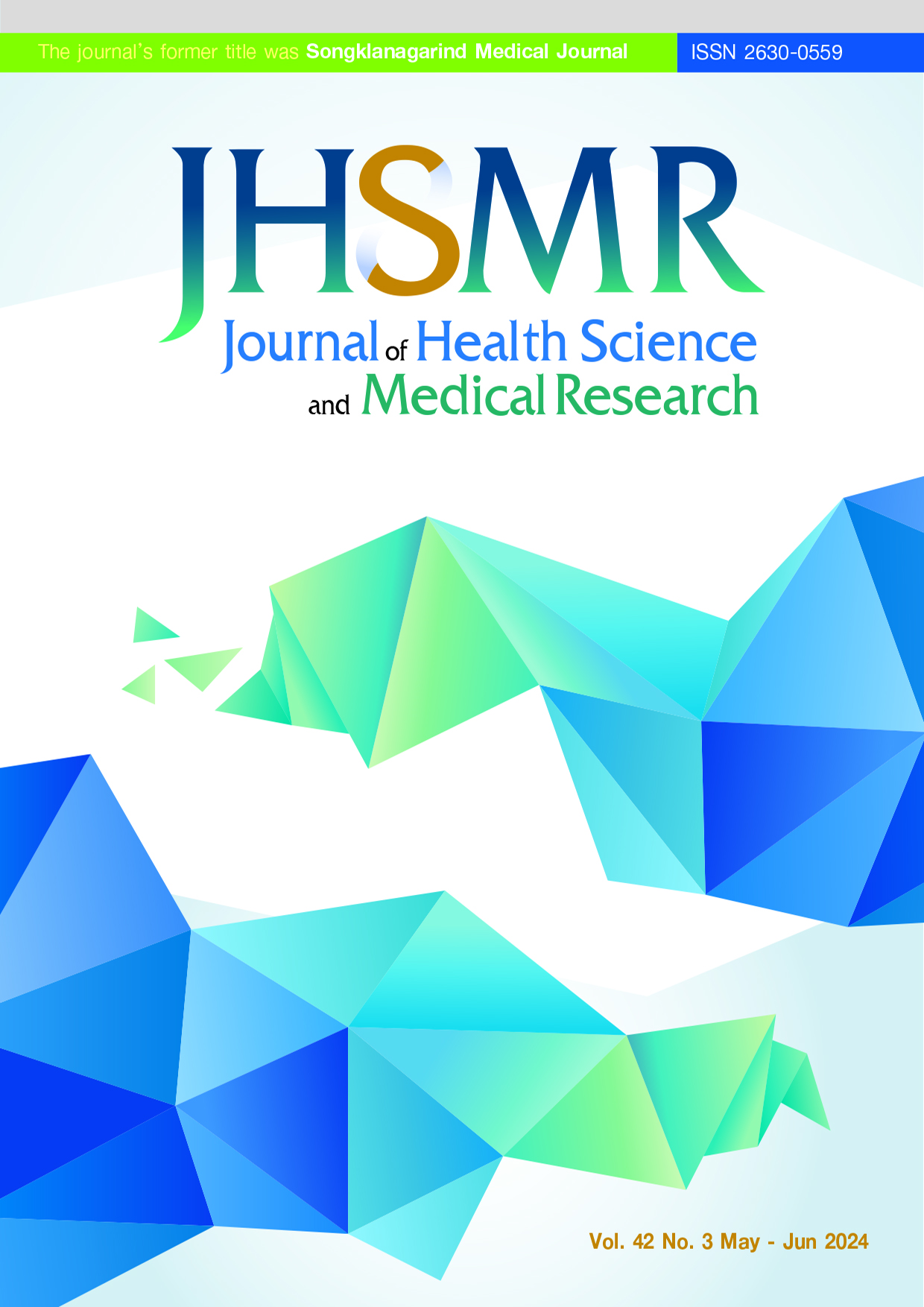Assessing the Impact of Feeding Stray Dogs on Stray Dog-Related Issues: A Community-Based Study in Songkhla, Thailand
DOI:
https://doi.org/10.31584/jhsmr.20231008Keywords:
dog-related problems, stray dogs, stray dog feeding, ThailandAbstract
Objective: Increasing stray dog populations have transformed stray dog issues from a third-world problem to a global public health priority. This study aimed to determine factors related to feeding stray dogs and other factors that can impact stray dog-related issues.
Material and Methods: This community-based cross-sectional study was conducted in Songkhla, Thailand, from the 4th to the 29th of January 2021. Data was collected via phone interviews. Logistic regression was performed to measure the association between the independent variables and problems related to stray dogs.
Results: Among 168 participants, 137 (81.5%) reported having experienced a negative impact in connection with problems caused by stray dogs. The most common problem was garbage scavenging (62.5%), which predominantly occurred between 18:00 and midnight. Feeding stray dogs was significantly associated with stray dog-related problems (odds ratio [OR]=3.94 with a 95% confidence interval [CI] 1.26-17.41).
Conclusion: Providing food to stray dogs causes problems and is also prohibited by law. It is important for media, community leaders, and other influential groups to create awareness and foster cooperation among communities to address this issue.
References
Food and Agriculture Organization of the United Nations. Dog population management [monograph on the Internet]. Rome: Food and Agriculture Organization of the United Nations; 2014 [cited 2023 Aug 30]. Available from: https://www.fao.org/3/i4081e/i4081e.pdf
Strand P. The global stray dog population crisis [homepage on the Internet]. Portland: The National Animal Interest Alliance; 2011 [cited 2023 Aug 30]. Available from: http://www.naiaonline.org
Katica M, Gradascevic N, Hadzimusic N, Obradovic Z, Mujkanovic R, Mestric E, et al. Widespread of stray dogs: methods for solving the problem in certain regions of Bosnia and Herzegovina. Int J Res Granthaalayah 2017;5:414–22. doi: 10.29121/granthaalayah.v5.i6.2017.2050.
Taylor LH, Wallace RM, Balaram D, Lindenmayer JM, Eckery DC, Mutonono-Watkiss B, et al. The role of dog population management in rabies elimination-a review of current approaches and future opportunities. Front Vet Sci 2017;4:109. doi:10.3389/fvets.2017.00109.
Smith LM, Hartmann S, Munteanu AM, Dalla Villa P, Quinnell RJ, Collins LM. The effectiveness of dog population management: a systematic review. Animals (Basel) 2019;9:1020. doi: 10.3390/ani9121020.
Panyarachun A. Act on the maintenance of the cleanliness and orderliness of the country, B.E. 2535 [monograph on the Internet]. Bangkok: Office of the Council of State, 1992 [cited 2023 Aug 30]. Available from: http://web.krisdika.go.th/data/document/ext809/809966_0001.pdf
Ghazali SB. Mobile data collection using KoBo toolbox. Penang: Wordfish; 2022.
Lyu P. Proposal on solutions to stray dog problem in American Cities. J Pol Sci Pub Aff 2015;3. doi: 10.4172/2332-0761.1000175.
Raymond TN, Roland ME, Françoise KM, Francis Z, Livo EF, Clovis ST. Do open garbage dumps play a role in canine rabies transmission in Biyem-Assi Health District in Cameroon? Infect Ecol Epidemiol 2015;5:26055.
Harris GL, Brodbelt D, Church D, Humm K, McGreevy PD, Thomson PC, et al. Epidemiology, clinical management, and outcomes of dogs involved in road traffic accidents in the United Kingdom (2009–2014). J Vet Emerg Crit Care 2018;28:140–8.
Sriaroon C, Sriaroon P, Daviratanasilpa S, Khawplod P, Wilde H. Retrospective: animal attacks and rabies exposures in thai children. Travel Med Infect Dis 2006;4:270–4.
Kasempimolporn S, Jitapunkul S, Sitprija MD, V. Moving towards the elimination of rabies in Thailand. J Med Assoc Thai 2011;91:433–7.
Cortez-Aguirre GR, Jiménez-Coello M, Gutiérrez-Blanco E. Ortega-Pacheco A. Stray dog population in a city of Southern Mexico and its impact on the contamination of public areas. Vet Med Int 2018;2018:2381583. doi: 10.1155/2018/2381583.
Martínez ÁG, Santamarina Pernas G, Diéguez Casalta FJ, Suárez Rey ML, De la Cruz Palomino LF. Risk factors associated with behavioral problems in dogs. J Vet Behav 2011;6:225–31.
Merriam-Webster. The Merriam-Webster dictionary. Springfield: Merriam-Webster Inc; 2022.
Kato M, Yamamoto H, Inukai Y, Kira S. Survey of the stray dog population and the health education program on the prevention of dog bites and dog-acquired infections: a comparative study in Nepal and Okayama Prefecture, Japan. Acta Med Okayama 2003;57:261–6.
Tenzin NK, Dhand NK, Gyeltshen T, Firestone S, Zangmo C, Dema C, et al. Dog bites in humans and estimating human rabies mortality in rabies endemic areas of Bhutan. PLOS Negl Trop Dis 2011;5:e1391.
Strickland PC. It’sa dog’s life: international tourists’ perceptions of the stray dog population of Bhutan. J Arts Humanit 2015;4:1–11.
Downloads
Published
How to Cite
Issue
Section
License

This work is licensed under a Creative Commons Attribution-NonCommercial-NoDerivatives 4.0 International License.
























